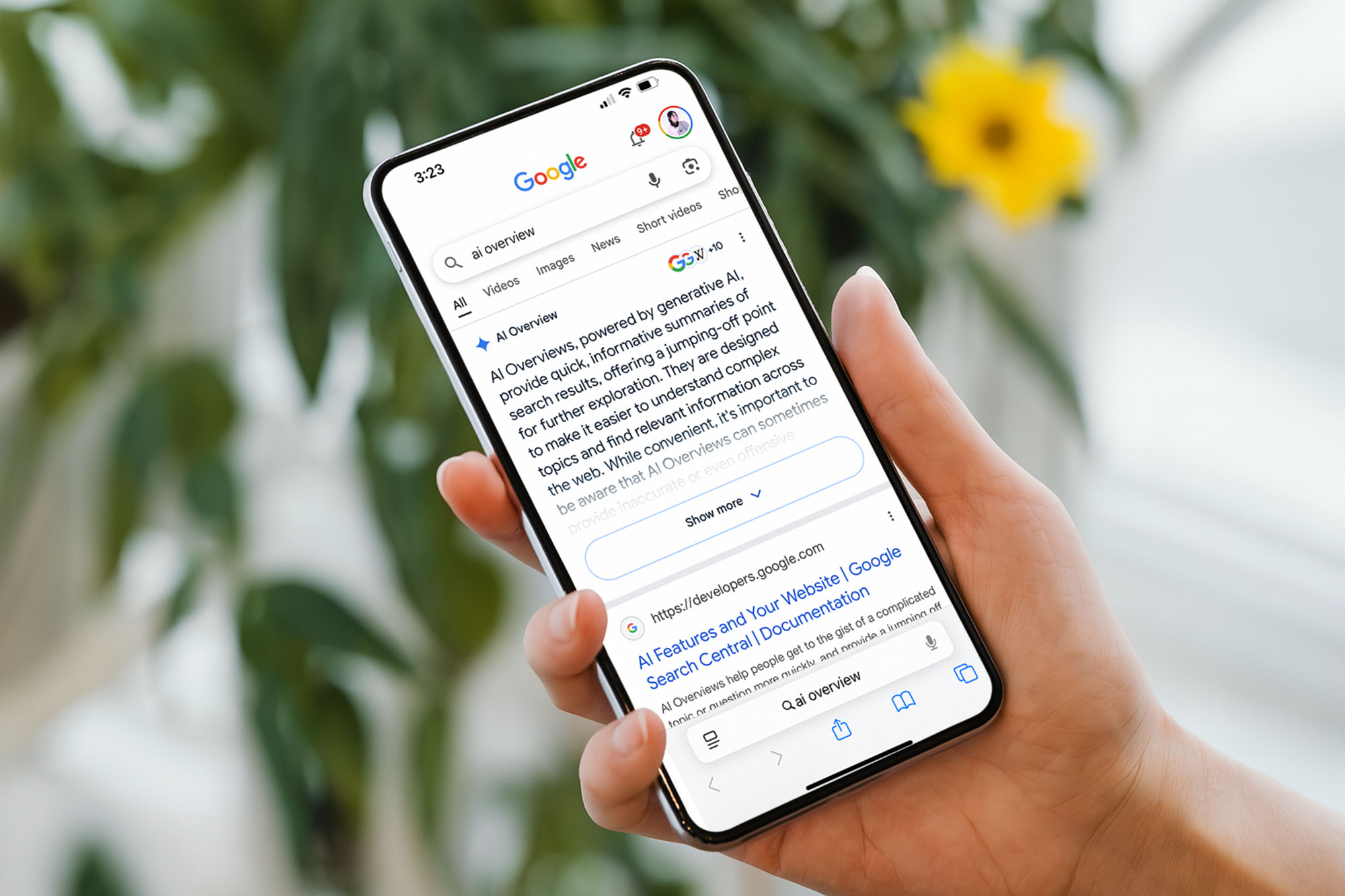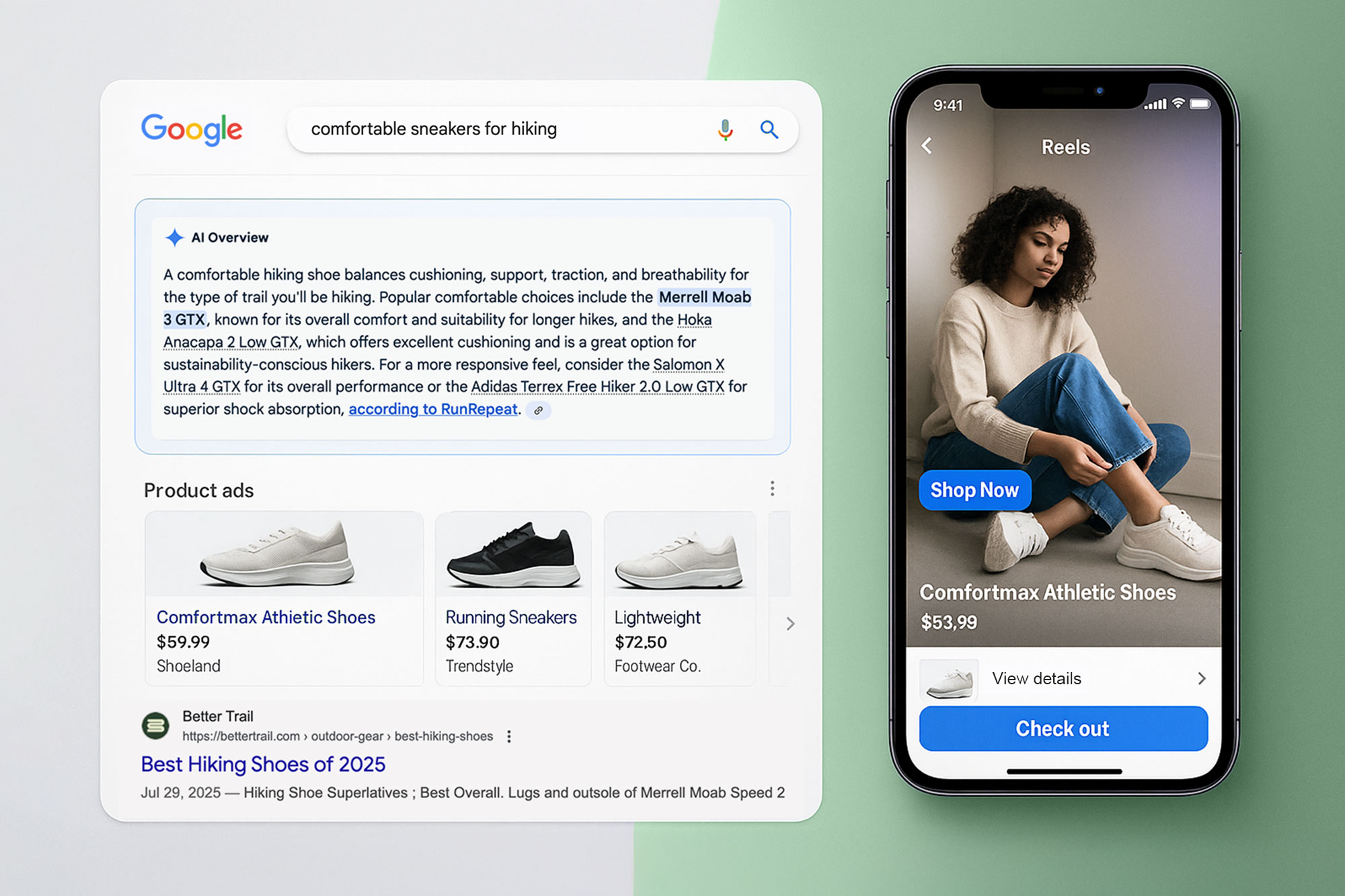Understanding AI Overviews, SEM, SEO & AEO
In today’s evolving search landscape, terms like AEO, SEM, and SEO are becoming more relevant than ever, but they can also feel overwhelming. Let’s break them down:
- AI Overviews are summaries generated by Google using generative AI to quickly answer search queries. These appear at the top of the search results page, sometimes replacing the need to scroll or click further.
- Search Engine Marketing (SEM) refers to paid search advertising, the text ads audiences see on Google when they search relevant keywords.
- Search Engine Optimization (SEO), on the other hand, focuses on improving a website’s organic ranking through content, technical structure, and backlinks.
- Answer Engine Optimization (AEO) is a more recent concept. It’s about structuring website content in a way that’s easily understood and indexed by AI systems, ensuring your content can be pulled into AI Overviews.
These strategies are interconnected. Strong SEO supports AEO, and SEM complements both by giving visibility when organic opportunities are limited. But AI Overviews are changing how they work together.

How AI Overviews Are Disrupting Search Behavior
AI Overviews are gaining ground fast. As of March 2025, they now appear in over 13% of U.S. search queries (up from 6.5% in January), and that number is climbing. 88% of AI Overview-triggering searches are informational, where users seek quick, concise answers. Rather than scrolling through multiple links, users are increasingly finding what they need directly in the overview itself. While this doesn’t necessarily reduce all engagement, it does mean fewer users are following the traditional journey from query to website.
For brands, this evolving behavior changes the role of both paid and organic strategies. Being “present” in the search results is no longer just about ranking high or bidding more, it’s also about being reference-worthy to AI systems, with clear and structured content that search engines trust.
How Businesses Can Adapt to New Search Habits
Instead of fighting the AI shift, businesses can adjust their strategies to meet users where they are. This starts with creating AI-friendly content, with clear, structured, and semantically rich information that aligns with what users are actually searching for.
But it’s not just about keywords. Structuring your website to support Answer Engine Optimization (AEO) is essential. That includes having a clean site map, consistent headers, clear metadata, and a well-organized page hierarchy. When your content is easy for AI systems to understand and cite, you increase the chances of being featured in AI Overviews, with a source link that drives quality traffic.
Brands should also focus on high-intent keywords and questions that AI Overviews are less likely to fully answer, like product comparisons, location-based queries, or branded search terms. These areas still present strong opportunities for both organic and paid visibility.

Thriving in the Age of AI Overviews
As AI transforms how people discover information, agencies play an important role in helping businesses adapt with confidence — not fear. At Helio, we view AI Overviews not as a threat, but as a signal that search is evolving. Our team works with clients to build search strategies that go beyond clicks: strategies rooted in structured content, performance-driven paid campaigns, and a deep understanding of audience behavior.
We help brands stay visible, whether that’s through optimizing for AI Overviews, refining SEM strategies, or bridging search with display and social to keep your audience engaged from first glance to conversion.
Curious how your brand can thrive in the era of AI Overviews? Let’s talk about building a future-ready digital strategy.








